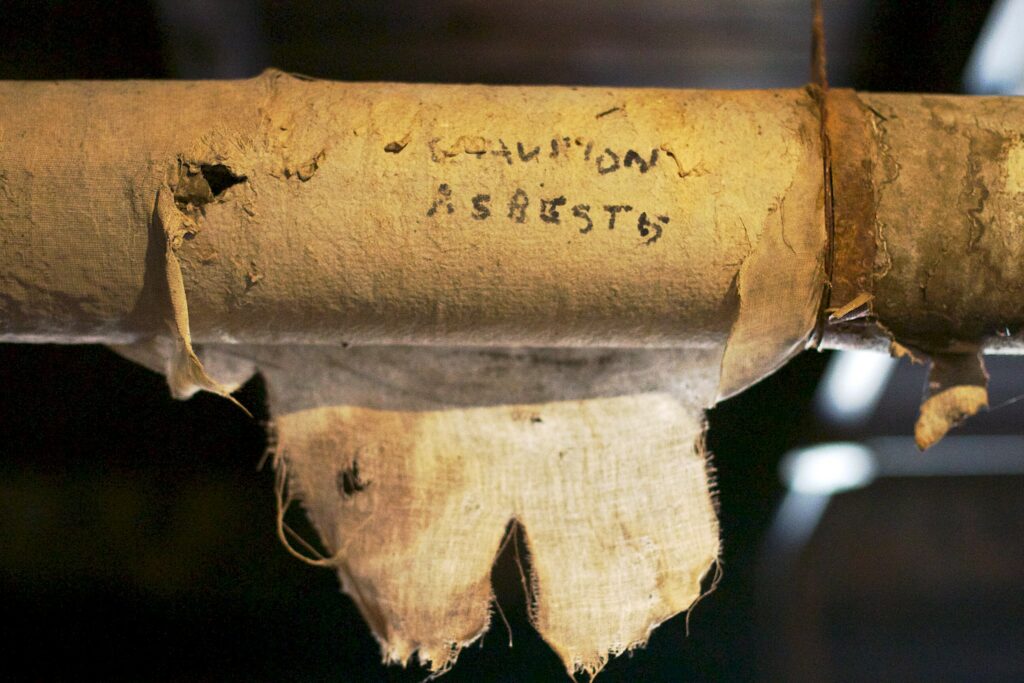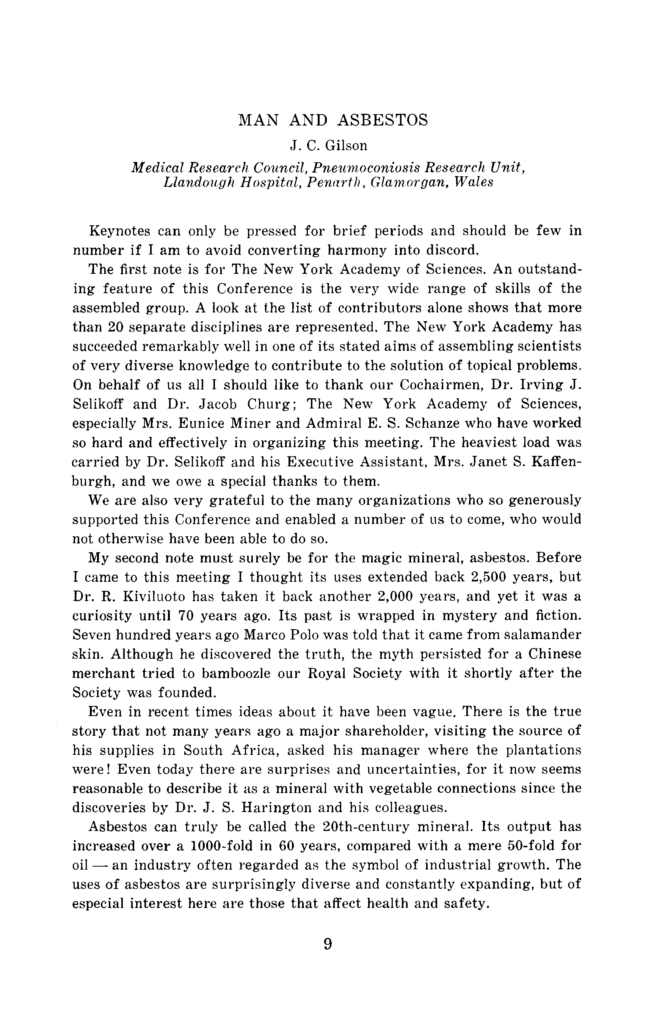The Academy’s Role in Asbestos Abatement
While the United States recently took formal action to ban the use of chrysotile asbestos, experts with The New York Academy of Sciences have voiced concern about this dangerous carcinogen for more than half a century.
Published April 5, 2024
By Nick Fetty
Digital Content Manager

Image courtesy of Alan Levine/Flickr.
In March 2024, the U.S. Environmental Protection Agency issued a regulation prohibiting “the use, manufacture and import of chrysotile asbestos,” a source of mesothelioma and the last known raw form of asbestos used in the United States.
While banning this dangerous substance has been a work in progress for more than half a century, The New York Academy of Sciences was one of the first organizations to voice concerns by expert scientists.
What is Asbestos?
Asbestos is a mineral fiber naturally occurring in rock and soil. Use of asbestos in the United States dates back more than two centuries, though it was during the Industrial Revolution (around the middle of the 19th century) that asbestos imports began taking off.
Throughout much of the 20th century, asbestos was used in different ways, but it wasn’t until around the 1930s that it began commonly being used in the construction of homes and buildings. Asbestos was used in an array of construction materials from insulation and pipe wraps to flooring and roofing. The first instances of asbestos-related diseases were reported in the 1920s and 1930s, though it would take nearly another half century before the U.S. government would begin regulating the use of the substance.
The Academy’s Involvement

It was during the annual meeting of the American Public Health Association convened at The New York Academy of Sciences in 1964 (then headquartered on the Upper East Side) where researchers began to engage in a serious dialogue about the negative public health effects associated with asbestos.
These researchers pointed to a study in Africa, in which there were 33 reported cases of mesothelioma in a particular region where asbestos is mined. Another study in New York City, examining workers exposed to asbestos during construction, found that of the nearly 307 construction trade union member deaths between 1943 and 1964, 10 were linked to mesothelioma. The report stated this was “an extraordinary high incidence for a tumor generally so rare.”
While researchers at the time admitted they did not have direct evidence, they were noticing linkages between occupational asbestos exposure and increased rates of cancers like mesothelioma. Another troubling aspect, as noted by the researchers, was that it can take a worker a latent period of 20 years or more between the time they are initially exposed to when they are diagnosed with cancer.
“It would appear that mesothelioma must be added to the neoplastic (cancer) risks of asbestos inhalation and joins lung cancer (53 out of 307 deaths) and probably cancer of the stomach and colon (34 out of 307 deaths) as a significant complication of such industrial exposure in the United States,” the Associated Press reported.
Regulating Asbestos
The first asbestos restrictions in the United States occurred in 1973, followed by other concerted efforts throughout the 1970s. The EPA attempted a complete ban on asbestos in 1989; however this effort was overturned by the First Circuit Court of Appeals in 1991. A 2022 rule by EPA was aimed at overturning this decision.
In March 2024, the Biden administration finalized the ban on chrysotile or white asbestos, the last remaining type of asbestos used in the United States. Companies will have up to 12 years to phase out the use of asbestos in their manufacturing processes.
The December 1965 issue of Annals that first reported these findings remains one of the most “sought and referenced” today, according to Douglas Braaten, PhD, Chief Scientific Officer for the Academy and Editor-in-Chief of Annals of the New York Academy of Sciences. A subsequent Annals issue published in 1979 extended the reporting of hazards associated with asbestos exposure.
